Are you excited to start playing the guitar but feeling overwhelmed by the different sizes available? Choosing between a 3/4 acoustic guitar and a full-size guitar is a crucial first step for any beginner. You’ve probably noticed guitars come in various dimensions, and navigating these choices can be confusing. Don’t worry, we’re here to clear things up!
In this guide, we’ll explore the key differences between 3/4 guitars and full-size guitars. We’ll help you figure out which size will best fit your playing style and individual needs. Whether you’re just starting your musical journey or are a seasoned player looking for a more compact option, finding a comfortable and suitable guitar is vital for your progress and enjoyment. So, let’s tune up and dive into the world of 3/4 acoustic guitars versus their full-size counterparts!
Understanding the Difference: 3/4 vs. Full-Size Acoustic Guitars
The distinctions between a full-size acoustic guitar and a 3/4 size acoustic guitar are significant and impact playability and sound. A typical 3/4 acoustic guitar measures approximately 36 inches in length and 13 inches in width, while a full-size guitar is larger, around 40 inches long and 15 inches wide. Another critical measurement is the scale length. Full-size guitars generally have a scale length exceeding 24 inches, whereas 3/4 guitars have a shorter scale length, typically between 20 and 24 inches.
One of the main differences stemming from scale length is string tension. Full-size guitars have higher string tension, contributing to tuning stability and a resonant sound. In contrast, a 3/4 guitar, with its shorter scale, has lower string tension. This can make it easier on the fingers, especially for beginners, but might require more frequent tuning adjustments.
Price is another factor where differences can be observed, although it’s not always directly related to size. While high-end full-size guitars can reach prices in the thousands of dollars, you can find 3/4 guitars at more budget-friendly price points, sometimes under a hundred dollars. However, remember that price isn’t always an indicator of quality, and both 3/4 and full-size guitars are available across a range of price and quality levels.
Perhaps the most noticeable difference for experienced players is the sound. Full-size acoustic guitars are known for producing a richer, fuller, and often louder tone due to their larger body size and soundboard area. A 3/4 guitar, while perfectly capable of producing pleasant sounds, may not have the same depth and resonance as a full-size instrument.
Now that we’ve covered the basics, let’s explore some of the best 3/4 acoustic guitars available to help you make an informed decision.
Top 3/4 Acoustic Guitars to Consider
If you’re looking for a smaller-bodied acoustic guitar, perfect for travel, beginners, or players who prefer a more compact instrument, there are excellent 3/4 options on the market. Here are some of the best 3/4 acoustic guitars that offer great sound and playability:
Zager 3/4 Acoustic Travel Guitar
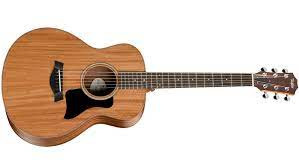 Zager Guitar
Zager Guitar
The Zager 3/4 Acoustic Travel Series is designed for portability and players who appreciate a smaller size without sacrificing quality. These guitars are constructed with high-quality woods and hardware, similar to Zager’s full-size models, promising enhanced tone as the guitar ages. Master luthier Denny Zager’s decades of experience inform the design, focusing on player comfort and performance. Key features include solid wood construction, a comfortable custom neck profile, and optimized string spacing for easier and faster playing. The unique bracing system and hand-carved bone nut and saddle contribute to a richer, deeper sound than you might expect from a 3/4 guitar.
Pros:
- High-quality materials and construction.
- Designed for comfort and playability.
- Richer sound for a 3/4 size.
- 100% money-back guarantee.
Cons:
- Higher price point compared to some other 3/4 guitars.
US $795
Taylor GS Mini-e Mahogany 3/4 Acoustic Guitar
 Zager Guitar
Zager Guitar
The Taylor GS Mini-e Mahogany is a popular choice for its ability to deliver genuine Taylor tone in a smaller, more manageable size. It’s ideal for beginners and experienced players alike who need a comfortable and portable instrument. Despite its 3/4 scale, it maintains the same string spacing as full-size Taylors, making it familiar to Taylor players. The ebony fretboard offers a smooth playing surface, and the mahogany top produces a warm, rich tone that is surprisingly full for a smaller guitar. The “e” in the name denotes onboard electronics, allowing you to plug in and amplify your sound with treble and bass controls for tone shaping.
Pros:
- Authentic Taylor sound in a smaller size.
- High-quality construction and materials.
- Onboard electronics for amplified performance.
- Comfortable playability for various player sizes.
Cons:
- Can be pricier than other 3/4 options.
US $799
Yamaha JR1 FG 3/4 Acoustic Guitar
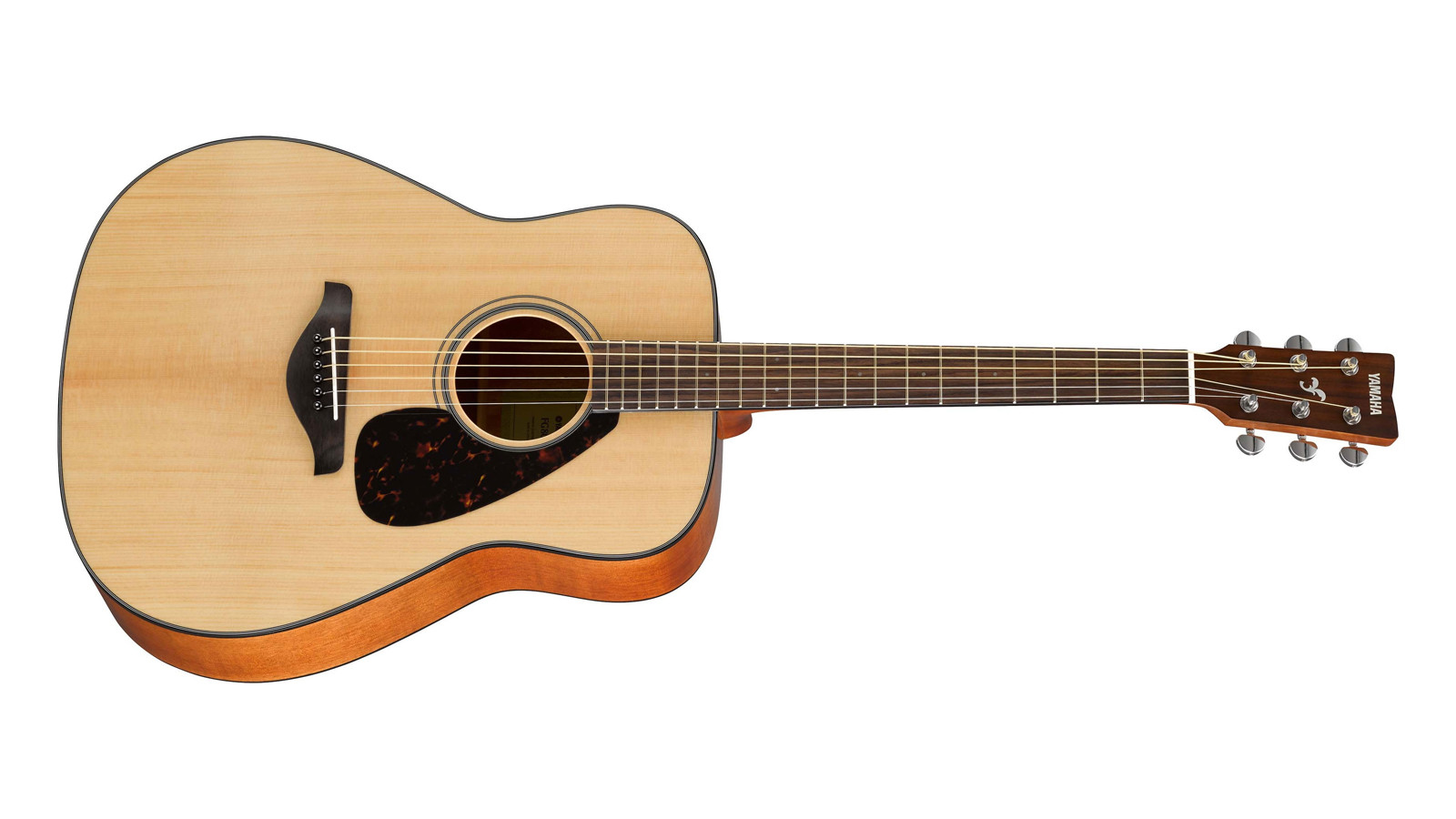 Yamaha JR1 FG 3/4 Acoustic Guitar
Yamaha JR1 FG 3/4 Acoustic Guitar
The Yamaha JR1 FG is an excellent entry-level 3/4 acoustic guitar, especially for beginners and those on a budget. It offers Yamaha’s renowned quality at an accessible price point. The slim neck and shorter scale length make it very easy to play, particularly for younger players. The rosewood fretboard adds to the comfortable playing experience. While it might lack some of the low-end fullness of larger guitars, it still provides a clear and projecting sound in the mid and upper ranges, suitable for practice and learning. Features include a solid Sitka spruce top and high-pressure laminate back and sides for durability and decent tone.
Pros:
- Very affordable and budget-friendly.
- Easy to play, ideal for beginners and children.
- Solid top construction.
- Reputable brand quality.
Cons:
- Sound may lack some depth compared to higher-end models.
- Basic features and appointments.
US $200
Gretsch G9520E ‘Gin Rickey’ 3/4 Acoustic Guitar
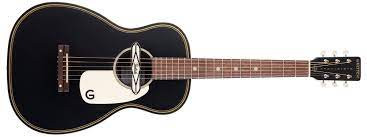 Gretsch Guitars G9520E Gin Rickey Acoustic/Electric With Soundhole Pickup, Walnut Fingerboard – Smokestack Black | Long & McQuade
Gretsch Guitars G9520E Gin Rickey Acoustic/Electric With Soundhole Pickup, Walnut Fingerboard – Smokestack Black | Long & McQuade
The Gretsch G9520E ‘Gin Rickey’ stands out with its vintage aesthetic and unique soundhole pickup. It appeals to players looking for style and substance in a 3/4 acoustic guitar. The unplugged tone is impressive for its price, offering a good low-end response and clear note definition across the walnut fretboard, making it great for open chords. When plugged in, the Gretsch Deltoluxe soundhole pickup delivers a tone reminiscent of an electric guitar, well-suited for blues and slide guitar styles. It’s a distinctive option for players wanting a 3/4 guitar with character and amplified capabilities.
Pros:
- Unique vintage style.
- Versatile Deltoluxe soundhole pickup.
- Impressive unplugged tone for the price.
- Suitable for blues and slide styles.
Cons:
- Styling might not appeal to all players.
US $389
Cordoba Cadete 3/4 Classical Acoustic Guitar
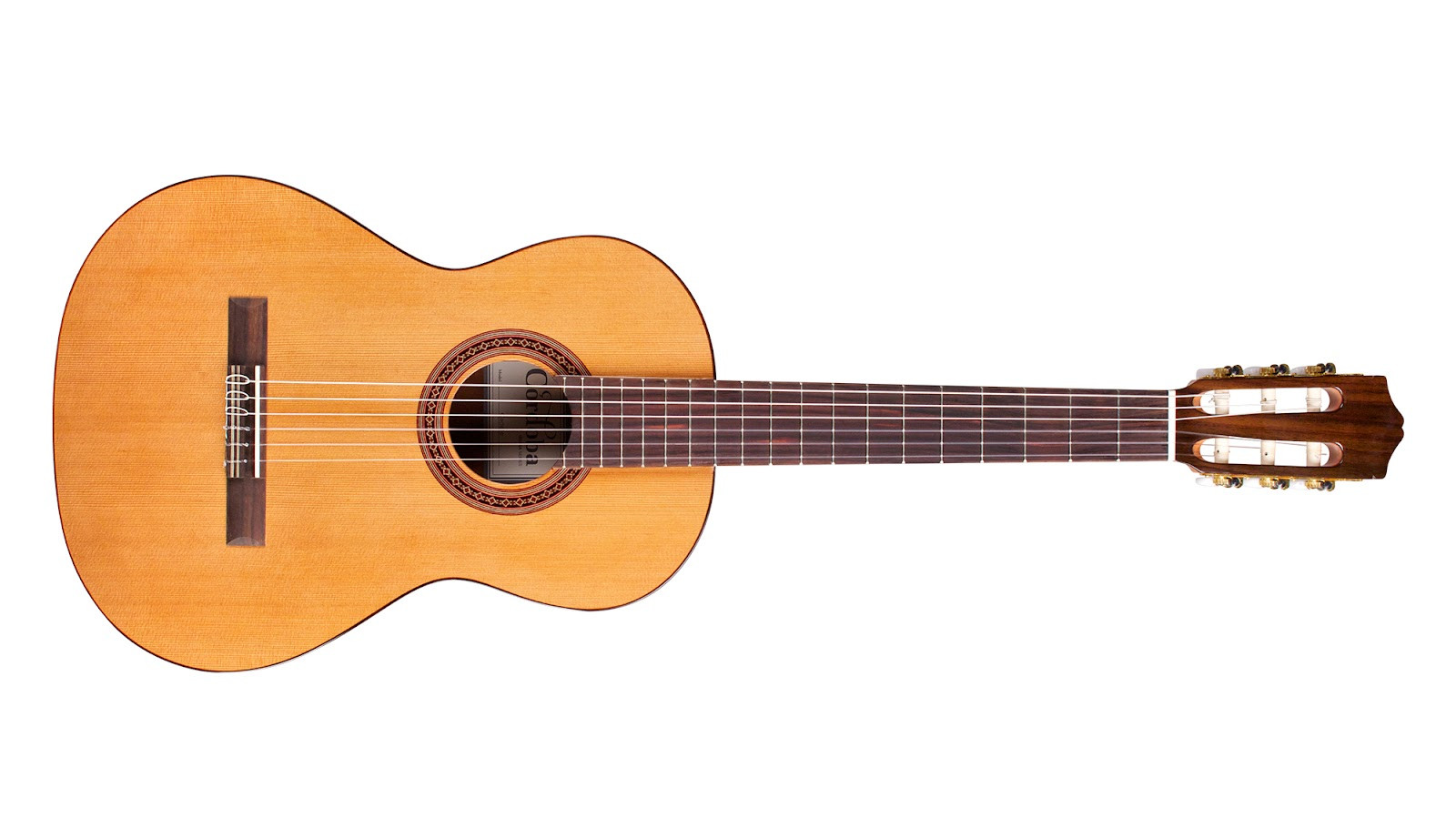 Cadete (3/4) – Cordoba Guitars
Cadete (3/4) – Cordoba Guitars
The Cordoba Cadete 3/4 Classical guitar is designed for those interested in classical guitar playing. It features nylon strings, which are softer on the fingertips, making it comfortable for beginners to learn. The mahogany neck is designed for comfort, particularly for fingerstyle playing, and the flat-radius rosewood fretboard is typical of classical guitars, encouraging classical techniques. The solid cedar top is a notable feature at this price point, offering a rich and resonant sound that rivals full-size classical guitars. It’s a fantastic choice for anyone starting out with classical guitar or needing a smaller nylon-string instrument.
Pros:
- Ideal for classical guitar beginners.
- Comfortable nylon strings.
- Solid cedar top for enhanced tone.
- Quality construction from a reputable classical guitar brand.
Cons:
- Nylon strings and classical style may not be suitable for all genres.
US $389
Full-Size Acoustic Guitars: When Size Matters
While 3/4 guitars offer numerous advantages, full-size acoustic guitars remain the standard and preferred choice for many players. The market for full-size acoustics is vast and diverse, offering instruments for every style and budget.
Zager 900CE Acoustic Guitar
 Yamaha JR1 FG 3/4 Acoustic Guitar
Yamaha JR1 FG 3/4 Acoustic Guitar
For players seeking a high-end, professional-grade acoustic guitar, the Zager Pro Series 900 is a top contender. Zager guitars are known for their playability and tone, and the 900CE is no exception. It features a unique bracing system designed to enhance projection and resonance, delivering a powerful and responsive sound. The longer aging process and thinner finish are intended to further improve sound depth and clarity. High-end appointments like hand-laid abalone and pearl inlays add to its aesthetic appeal. Equipped with Fishman’s Aura Digital Sound Imaging System, it allows for extensive sound customization when amplified.
Pros:
- Professional-grade quality and sound.
- Enhanced projection and resonance.
- High-end features and aesthetics.
- Fishman Aura pickup system for amplified performance.
- Lifetime warranty and money-back guarantee.
Cons:
- High price point.
US $2395
Yamaha FG800 Acoustic Guitar
 Yamaha JR1 FG 3/4 Acoustic Guitar
Yamaha JR1 FG 3/4 Acoustic Guitar
The Yamaha FG800 is often cited as the benchmark for affordable, high-quality full-size acoustic guitars, especially for beginners. It features a solid Sitka spruce top, which is rare at this price point and contributes significantly to its excellent sound quality. The maple fretboard and clean design add to its appeal. Sitka spruce is known for its balanced tonal properties, making the FG800 versatile for various playing styles. Its durable construction and sound quality make it an instrument that can last players well beyond their beginner stages.
Pros:
- Extremely affordable for a solid top guitar.
- Excellent sound quality for the price.
- Durable and well-built.
- Versatile for different playing styles.
Cons:
- Basic features and appointments.
US $229
Seagull S6 Original Acoustic
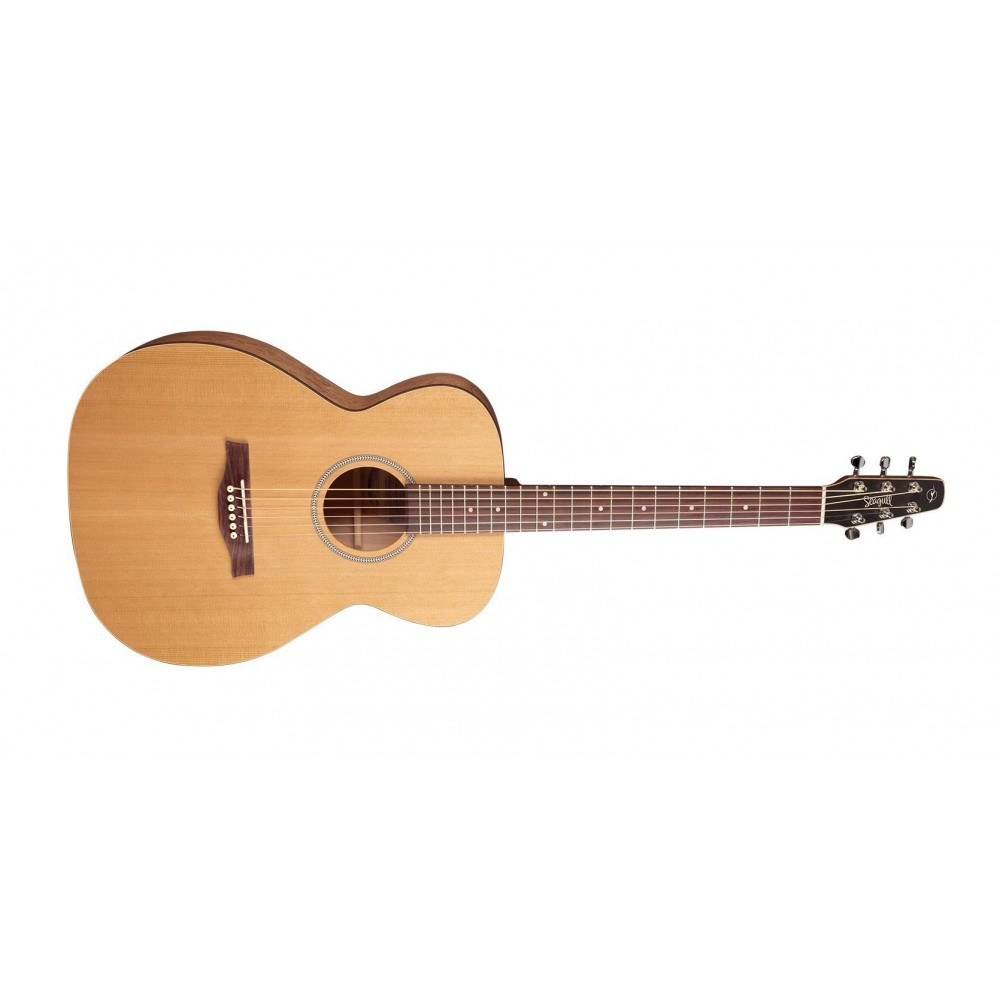 Seagull S6 Original Concert Hall Acoustic Guitar – Bandland
Seagull S6 Original Concert Hall Acoustic Guitar – Bandland
The Seagull S6 Original is a highly regarded full-size acoustic guitar known for its unique tonewood combination and excellent value. It features a solid cedar top and cherry back and sides, which together produce a bright and crisp tone, particularly well-suited for fingerpicking. The S6 Original is praised for its playability and sound quality, often recommended for intermediate players and beyond. It’s a robust and reliable instrument that delivers a distinctive tonal character.
Pros:
- Unique tonewood combination for bright tone.
- Excellent value for a solid top guitar.
- Highly regarded for sound and playability.
- Suitable for intermediate to advanced players.
Cons:
- No onboard electronics in the base model.
US $799
Martin LXK2 Little Martin 3/4 Acoustic Guitars
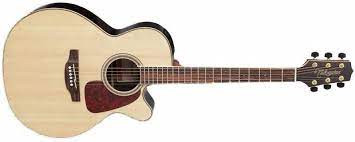 Martin LXK2 Little Martin 3/4 Acoustic Guitars
Martin LXK2 Little Martin 3/4 Acoustic Guitars
The Martin LXK2 Little Martin, despite its name and 3/4 designation in the original article (note: this is often marketed as a small-body or travel guitar, not strictly a 3/4 in all contexts), is included here as a compact option from a renowned brand. It’s designed for travel and players who prefer a smaller body size. While it doesn’t use solid wood for the top (HPL is used), Martin’s construction techniques and bracing patterns ensure a good sound for its size. It’s a practical and portable option, especially for those who want a Martin guitar in a smaller form factor.
Pros:
- Compact and travel-friendly.
- Martin quality and construction.
- Includes a padded gig bag.
Cons:
- HPL top instead of solid wood.
- Sound may not match full-size Martins.
US $399
Takamine GN93CE Acoustic Guitar
 Martin LXK2 Little Martin 3/4 Acoustic Guitars
Martin LXK2 Little Martin 3/4 Acoustic Guitars
The Takamine GN93CE is a stage-ready full-size acoustic-electric guitar with a striking appearance and versatile sound. It features a solid spruce top, rosewood sides, and a quilted maple back, creating a unique tonal profile with pronounced mids and trebles. The TK-40D preamp system offers comprehensive controls, including a tuner, EQ, and gain, making it ideal for live performance. The NEXC body shape (Takamine’s version of a grand auditorium/concert) provides a comfortable playing experience while delivering a balanced sound.
Pros:
- Stage-ready with onboard electronics.
- Unique tonewood combination for distinctive sound.
- Versatile TK-40D preamp system.
- Comfortable body shape.
Cons:
- Hybrid body shape might not be preferred by all.
- Tone might be brighter than some traditional acoustics.
US $799
3/4 Acoustic: Steel-String, Nylon-String Classical, or Electric?
When considering a 3/4 size guitar, you also need to decide on the type: classical (nylon strings), acoustic (steel strings), or electric. For very young beginners, a 3/4 classical guitar is often recommended. Nylon strings are much softer than steel strings, making them easier on developing fingers and reducing finger pain during the initial learning stages.
However, for older children, teenagers, or adults, a 3/4 steel-string acoustic guitar or a 3/4 electric guitar might be more appropriate, depending on musical interests. Steel-string acoustics produce a brighter, louder sound commonly heard in pop, rock, folk, and country music. Electric guitars, even in 3/4 size, offer versatility through amplification and are suitable for genres like rock, blues, and metal. The choice depends on the player’s age, finger strength, musical preferences, and desired sound.
Choosing the Right Size for You
Selecting the right guitar size is a personal decision influenced by several factors:
- Age and Body Size: Younger children typically benefit most from 3/4 size guitars due to their smaller hands and arms. Smaller adults may also find 3/4 guitars more comfortable.
- Hand Size and Reach: If you have smaller hands or find reaching around a full-size guitar uncomfortable, a 3/4 guitar can significantly improve playability.
- Playing Style and Genre: While 3/4 guitars are versatile, full-size guitars often provide a richer, fuller sound preferred for certain genres and playing styles.
- Portability: If you need a guitar for travel or easy transport, a 3/4 guitar is significantly more convenient.
- Sound Preference: Consider whether the slightly less resonant sound of a 3/4 guitar is acceptable for your needs, or if you require the fuller tone of a full-size instrument.
- Budget: 3/4 guitars can sometimes be more budget-friendly, but prices vary across both sizes depending on brand and features.
Ultimately, the best way to decide is to try out both 3/4 and full-size guitars if possible. Pay attention to how each feels in your hands and how comfortable you are playing different chords and scales.
Conclusion
Choosing between a 3/4 acoustic guitar and a full-size guitar is a fundamental decision for any guitar player. A 3/4 acoustic guitar is an excellent choice for beginners, children, travelers, or anyone seeking a more compact and comfortable instrument. They offer easier playability and portability, making them ideal for learning and practice. While full-size guitars offer a richer and fuller sound, the advancements in 3/4 guitar design mean you don’t have to compromise significantly on tone when opting for a smaller size. Consider your individual needs, playing style, and physical comfort to make the best choice for your musical journey. Explore the models mentioned above and find the 3/4 acoustic guitar that inspires you to play!

